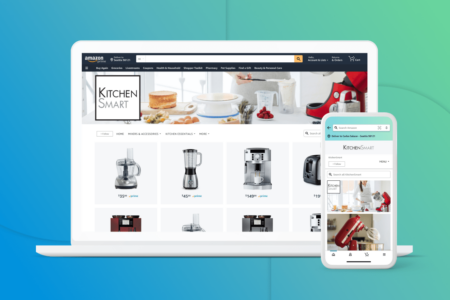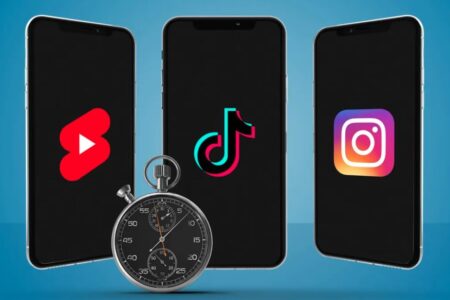Every modern business needs to have a digital presence, there are no negotiables. Audiences and potential customers now expect well-curated websites and social media accounts to vet your claims and conduct thorough research into your brand before offering their patronage.
Where once they would simply ask their friends for a recommendation, now they jump to scan your reviews.
Where once you would need to fork out a sizeable investment for billboards or radio advertising space, your target market can be drawn to the posts you have created on Facebook or Instagram.
But it isn’t the early 2010s anymore. Businesses around the world and in every industry know the power of digital marketing, and as such, the ‘quick wins’ have been rubbed out by a saturated online landscape. The key to success these days is to know how to cut through the noise and offer something of real value.
Now, with the advancement of social media and search engine advertising, this can be done well through paid campaigns, but there are still methods out there that can gain a strong return on investment in an organic sense. Many businesses have in fact forgotten, or at least neglected, how the right pairing of key technology and quality content can build zero-cost digital marketing campaigns delivering real traction for your business.
Luckily, the team at Clearwater haven’t forgotten, and have compiled 9 key campaign examples to help you diversify your wider digital marketing strategy.
1. Campaigns Driven by Causes & Clear Purpose
To start here may seem confusing, but it is key to show the power of good content – not expensive content, just good.
Modern consumers love to know the values of their brands, but hate seeing them plastered about their promotional material without any proof or substance. You should therefore occasionally shift your focus onto campaigns driven by real-world causes and have a clear purpose for doing so.
These types of campaigns often resonate strongly with consumers and can help create a sense of loyalty and belonging among your target audience. Some examples include promoting social or environmental causes, rallying support for important global issues, or creating content that highlights the importance of diversity and inclusion in society.
Avoid simply hopping on the bandwagon of a trending issue to try and leech some social clout, as your audience will see straight through it. Instead, select something you are truly passionate about and start a conversation by simply sharing an image or writing an engaging post.
2. Wellbeing Check-Ins with Your Community
Keeping with the theme of starting a conversation, audiences and consumers also love a brand that isn’t too ‘corporate’; they prefer to work with or shop from a business they can relate to, and that directly relates to them. And there is no better method of doing this than by communicating with your community for a wellbeing check.
This involves reaching out to customers through channels like social media or email to ask about how they are doing and provide resources or support if needed. This is not an opportunity for a sales pitch. Instead, speaking directly with customers and showing them that you care about their wellbeing, you can build meaningful relationships and increase brand loyalty over time.
No one is saying you should take on the role of a therapist, but there is plenty you can do to align it with your offerings. For example, instead of pushing for a hard sell with promotions and exclusives, a business consultant could simply do a check-in to ask how their audience is recovering post-pandemic. The responses will fuel real conversations and pain points, and can deliver organic, genuine opportunities for assistance.
3. Start a Blog
Heard the old adage, ‘Content is King’? It’s a quote that has been overused to death, but only because it is so true. Content marketing is a great way to generate interest in your business and attract new customers, and one of the best methods that won’t cost you a dime is by starting a blog. Creating informative and engaging blog content will show your potential customers that you are an expert in your field and build trust over time. Sure, you may not initially be a confident writer or storyteller, but if you know your subject matter, you can refine how you deliver value to your audience, learn what resonates and what doesn’t, and it will soon come back to reward you in spades.
All it takes is a little practice.
4. Create Instructional or Informational Videos
Nowadays, video is one of the most popular and effective ways to communicate a message. And when it comes to marketing, informational videos are a great way to reach out to potential customers, demonstrate your authority in the industry, build followers, and promote your product or service.
Videos are highly engaging and can capture attention more easily than other types of content. People are also more likely to remember information that they see in a video, as opposed to something that they read or hear.
They are also versatile – you can use them on your website, social media channels, or even in email marketing campaigns. They’re a great way to give customers a quick overview of what you offer, and they can be easily shared so that your message reaches a wider audience.
If you’re thinking of creating an informational video for your marketing campaigns, keep the following tips in mind:
- Make sure the video is clear and concise. You want to ensure that your key message comes across loud and clear to your audience. Keep it under two minutes if possible, and focus on one main idea, rather than falling down a rabbit hole (if they want to learn more, they can reach out).
- Use visuals to help get your point across. People are more likely to remember information that they see, so incorporating visuals into your video will help drive home your point.
- Keep your target audience in mind when creating the video. What is it that they need to know or understand? Tailor your messaging accordingly and make sure you’re providing them with the information they need.
- Do some research on what other companies are doing when it comes to informational videos – this will give you a better idea of what works and what doesn’t, helping you create a more effective marketing campaign.
- Include Call-to-Actions. A good CTA at the end of your video will prompt viewers to follow your channel, watch another video, and even contact you directly for assistance.
There are a range of tools that you can use to make your videos, from free screen-recording software to the camera on your smartphone. There’s no longer an exclusive need for expensive production equipment (however this can assist as you grow to show more authority with your brand).
5. Fear of Missing Out (FOMO) Campaigns
Another effective approach is to leverage fear of missing out (FOMO) campaigns. These types of campaigns tap into consumers’ innate desire to stay up-to-date and avoid ‘missing out’ on the latest trends, products, or experiences. FOMO campaigns can involve creating highly engaging social media and email content that encourages followers to act quickly in order to take advantage of exclusive deals or limited-time offers. If you have a planned promotion, it is very easy to notify your followers with a ticking clock, or even announce some offers available exclusively to online shoppers.
6. Leverage Google My Business
A Google My Business (GMB) Account is a free online platform that allows businesses to easily manage their presence on Google. With a GMB account, you can manage your location listing information, post updates and photos from your business’ page, respond to customer reviews and much more. This allows you to not only improve your visibility on the world’s most popular search engine, but also make it easier for customers to find your business and connect with you online through both Google Search and Maps.
When you create a GMB account, you will be asked to provide some basic information about your business. This may include things such as the name of your business, its address, phone number, opening hours and website URL. You will also be asked to choose the categories that best describe your business. Once you have provided this information, your business will be listed on Google Maps and customers will be able to find your listing when they search for keywords related to your business.
If you have a physical location for your business, it is important to create a GMB account so that customers can easily find your business on Google Maps, and find the appropriate way to get there. If you do not have a physical location, you can still create a GMB listing, but your business will be less visible on Google. Creating a GMB account is quick and easy, and one of the best digital marketing strategies to get started with!
7. Use Hashtags – Always
Another great way to reach customers without spending a lot of money is to leverage hashtags. Hashtags can be used on nearly all social media platforms like Facebook, Twitter, Instagram, TikTok and LinkedIn, and are a great way to categorise content and make it easier for people to find what they’re looking for online.
But how do hashtags work?
Hashtags are basically just keywords with a ‘#’ in front of them. When you use a hashtag, you’re adding your content to a larger conversation that is taking place around that topic. For example, if you are an eCommerce cosmetics company, you may want to promote a new skincare line, and include a ‘#skincare’ in your post. Alternatively, if your brand is joining in on a new viral trend, look for the hashtag that has been used to be associated with it.
Be careful with your choices, however, as most platforms will have a limit on the amount you can include. Instagram, for example, only allows up to 30 hashtags on posts, and up to 10 on Stories. A good tip is to adopt some free software that can generate suggestions for you based on popularity. Also, keep your posts clean by putting your hashtags in the comments section, rather than the description.
8. Encourage Brand Ambassadors through User Generated Content
Encouraging brand ambassadors is another great way to promote your business without spending a lot of money. Brand ambassadors are customers or followers who are passionate about your brand and act as advocates for your products or services. By leveraging the influence of brand ambassadors, you can reach new audiences and promote your business in a cost-effective way.
Traditionally, the way to find and recruit brand ambassadors for your business is to pursue influencers or celebrities and offer them some form of incentive or financial compensation. But it is also just as effective to survey your current customers to see if they would be willing to act as ambassadors for your brand. This allows you to leverage the real relationships that these people already have with others in order to spread awareness about what you offer.
To do this, encourage user-generated content (UGC). This is any type of online content that has been created by users rather than brands, and can include comments, social media posts, ratings, reviews, and more. As such, ask your audience to upload pictures using your products, comment their thoughts on your offerings, or even ask for a review to go in the running for some exclusive offer or prize. One of the biggest benefits of UGC to brands is the ability to get direct feedback on their products or services from people who are actually using them, and build stronger connections with consumers, all while leveraging the social authority of the public. Oh, and it’s completely free!
9. Participate in Social Media Groups
Participating in social media groups is also a great way to connect with potential customers and promote your business. There are many online groups dedicated to specific topics or industries, namely on Facebook and LinkedIn, and by joining these groups, you can share your expertise, answer questions, and build relationships with potential customers.
It is important to remember, however, that these groups were built to offer value, so go easy on the hard sells. Take the time to offer advice or ask poignant questions to show you aren’t just there to make a quick buck – you will find you can obtain far more better clients or customers this way.



